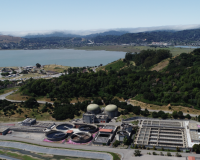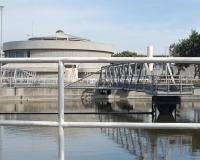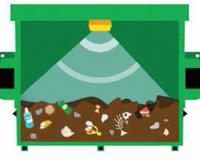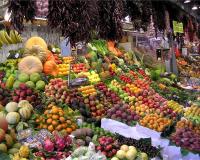
Vibrant Environment
Food Waste Initiative
All | Biodiversity | Climate Change and Sustainability | Environmental Justice | Governance and Rule of Law | Land Use and Natural Resources | Oceans and Coasts | Pollution Control

Food waste is a systemwide problem, affecting all stages of the supply chain. Therefore, solving it will take a systemwide approach. A new report by ReFED, Roadmap to 2030: Reducing U.S. Food Waste by 50%, was designed to provide food businesses, governments, funders, and more with a framework to align their food waste reduction efforts.

An estimated 35% of food that is produced is uneaten, with losses occurring along the supply chain from farms to consumers. The majority from non-industrial sources ends up decomposing in landfills, where it releases methane, a powerful greenhouse gas (GHG). Recycling food waste through anaerobic digestion (AD), in which bacteria break down organic material in the absence of oxygen and create biogas, can create a triple-win for GHG mitigation.

With the U.S. Senate voting on July 31 to join the House of Representatives in conference on their respective Farm Bills, the two houses face major challenges to resolve the wide gaps in many elements. Reauthorized every 5 years or so, the Farm Bill is a comprehensive piece of legislation that affects all facets of the American food supply.

It’s well known that up to 40% of food in the United States goes to waste. As a result, a large portion of the blue water utilized in agricultural irrigation ends up back in the ground—not in aquifers, but in landfills. While the majority of food waste in the United States is attributable to the disposal of safe, edible foods, a considerable amount of food that goes to landfill is “lost” due to spoilage or food being otherwise deemed unfit for human use.

The wastewater sector’s “Utility of the Future” (UOTF) initiative envisions the sector’s transformation from managing waste to recovering and recycling valuable resources, thereby creating financial benefits for utilities, as well as environmental and economic development benefits for communities.

Some say leftovers are the best part of Thanksgiving. While that may be true, the rest of the year, there are ample missed opportunities to donate surplus prepared foods from institutions and restaurants. Realizing these opportunities is an important way to waste less food and feed more people, because up to 40% of food (along with the water, energy, and land used in production) goes to waste every year in the United States. At the same time, over 13% of Americans—one in eight—experience food insecurity.
![Food Waste By Taz [CC BY 2.0 (http:/creativecommons.org/licenses/by/2.0)], via Wikimedia C](/sites/default/files/styles/blog_thumbnail/public/images/blog/800px-gi-market-food-waste.jpg?itok=_rXDq7mT)
Recycling food waste through composting and anaerobic digestion has the greatest potential by far to reduce the quantity of food waste going to landfills over the next 15 years relative to food waste reduction and reuse, according to ReFED. However, as more cities and states institute landfill food waste bans and other programs to promote recycling, the demand for centralized organic processing facilities is outpacing the supply. To address the gap, vendors are actively marketing to commercial customers new onsite pre-processing systems, including dehydrators, pulpers, and biodigesters. The systems can save money by reducing or eliminating off-site hauling of food waste and are well suited to facilities short on space and staff time. But the question arises: are the nutrients and energy in food waste really being recycled? The answer depends upon the next stage of processing.

Imagine the dumpsters behind restaurant row in your community signaling their hauling company to come pick them up because they are full and about to overflow, or their food is rotting and about to stink up the neighborhood. Such are the promises for waste management of new “smart technologies,” based on sensors, radio frequency identification (RFID) tags, big data, and social networks.

In a Vibrant Environment blog post on February 17, 2017, we provided an overview of the types of approaches that cities and states can use to address the environmental and social justice implications of wasting 40% of the food that is produced in the United States. We addressed reducing food waste before it happens, but because that is not always possible, we turn now to the next best alternative—rescuing or donating wasted food.

Strategies for cities and states to reduce food waste can be thought of through the lens of the “Three Rs” of EPA’s Food Recovery Hierarchy—reduction, reuse, and recycling. In food waste terms, the Three Rs mean preventing wasted food at the source, donating wasted food leftovers, and recycling food waste through composting or anaerobic digestion.
The recent ReFED report on reducing food waste quantifies the economic value and diversion potential of different strategies related to each of the Three Rs. According to ReFED, source reduction and donation generate the most economic value per ton of food saved, while food recycling and composting have the potential to divert a much greater quantity of food from landfills.